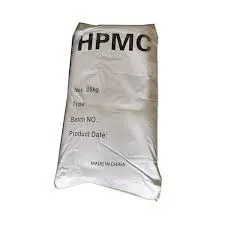
8月 . 05, 2024 13:06 Back to list
Exploring the Various Categories of HPMC Grades for Enhanced Application Performance and Quality
Understanding HPMC Grades A Comprehensive Overview
Hydroxypropyl Methylcellulose (HPMC) is a versatile and widely used polymer derived from cellulose. It has gained significant prominence in various industries such as food, pharmaceuticals, cosmetics, and construction due to its unique properties. The different grades of HPMC are designed to cater to specific applications, and understanding these grades can help users make informed choices for their projects.
What is HPMC?
HPMC is a semisynthetic polymer formed by the hydroxypropyl and methylation of cellulose, a natural polymer sourced from plant cell walls. The modification process imparts several desirable properties, including solubility in water, thermal stability, and film-forming capabilities. This makes HPMC an excellent choice for various applications, including as a thickening agent, emulsifier, and stabilizer.
HPMC Grades and Their Applications
HPMC is available in various grades, each tailored for specific applications based on its chemical composition, manufacturing process, and resulting physical properties. The classification of HPMC grades often revolves around their viscosity, methoxy, and hydroxypropyl content. Here are some of the commonly recognized HPMC grades
1. Low Viscosity Grades These grades are typically used in applications where lower viscosity is required. They are commonly found in food products as thickening agents and in pharmaceuticals for tablet formulation.
2. Medium Viscosity Grades Medium viscosity HPMC is versatile and widely utilized across diverse sectors, including the cosmetic industry for lotions and creams, as it provides a smooth texture and excellent moisture retention.
3. High Viscosity Grades High viscosity grades are essential in applications that require significant thickening or gelling properties. They are used in construction for mortar and other building materials, providing improved workability and adhesion.
hpmc grades

4. Specialty Grades These include HPMC grades modified for specific functionalities, such as those that are optimized for controlled-release pharmaceutical formulations or those that exhibit enhanced compatibility with various other ingredients in food and cosmetic products.
Factors Influencing the Choice of HPMC Grade
When selecting an HPMC grade for a specific application, several factors must be considered
- Viscosity Requirements The desired thickness or flow properties of the final product play a crucial role in grade selection. For instance, a thicker consistency may necessitate a high-viscosity grade.
- Temperature Stability Some formulations may require HPMC with better thermal stability, especially in food processing or hot-fill applications.
- pH Compatibility Certain HPMC grades may perform better in specific pH environments, making it vital to consider the formulation conditions.
- Regulatory Compliance For applications in the food and pharmaceutical sectors, it’s essential to choose HPMC grades that comply with regulations from organizations like the FDA or EFSA.
Conclusion
In conclusion, HPMC is a crucial ingredient in many products we encounter daily, thanks to its multifaceted properties and grades. Understanding the different HPMC grades and their specific applications empowers developers, manufacturers, and end-users to select the most suitable options for their needs. Whether in construction, food, or pharmaceuticals, the right HPMC grade can enhance product performance, quality, and stability, ultimately leading to better consumer satisfaction. As industries continue to evolve, the demand for specific HPMC grades will likely grow, driving further research and innovation in this fascinating field.
-
Versatile Hpmc Uses in Different Industries
NewsJun.19,2025
-
Redispersible Powder's Role in Enhancing Durability of Construction Products
NewsJun.19,2025
-
Hydroxyethyl Cellulose Applications Driving Green Industrial Processes
NewsJun.19,2025
-
Exploring Different Redispersible Polymer Powder
NewsJun.19,2025
-
Choosing the Right Mortar Bonding Agent
NewsJun.19,2025
-
Applications and Significance of China Hpmc in Modern Industries
NewsJun.19,2025







